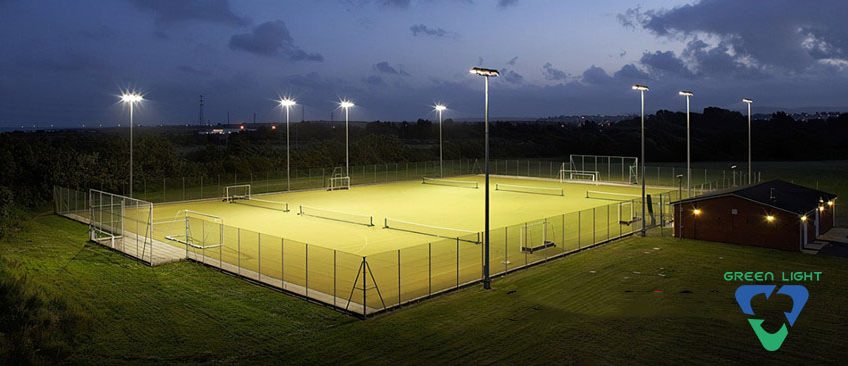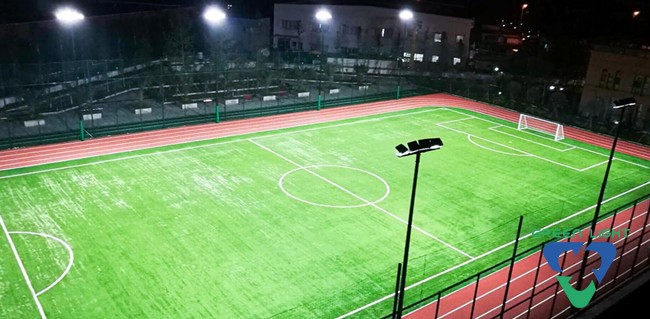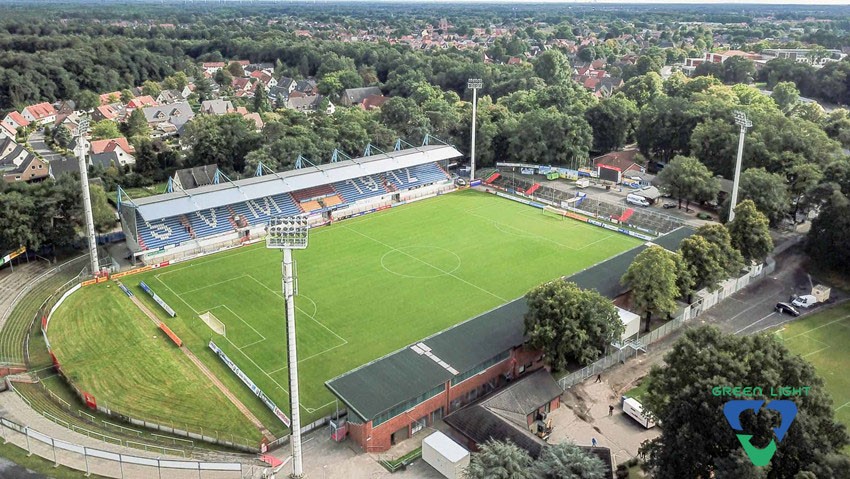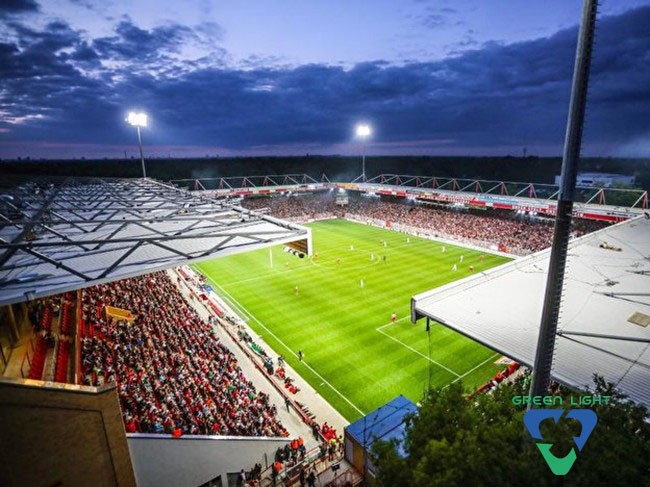
Compare side lights and corner lights in stadiums-2022 specification
UL certificate high mast lighting TUV certificate football stadium light factry soccer field lights selling
There is a major difference between how a field is illuminated and why it has become something close to science in professional sports. This guide can be used as a reference tool for many people who do not understand how stadium lighting works. Not only should you see why one or the other has specific advantages and disadvantages, but also help with the on-site stadium lighting needs. If your job is to shine a light on a field, you should know these viable points and their uses.

About side lights on the sports field
Each sport field will have 4 corners, which will be the idea points where side lighting can be placed. Diagonal lighting covers the field from almost all directions. It also allows athletes and spectators to watch from all directions. Depending on the size of the playing field, the lights need to be placed on the high mast. The distance and height of these lamps have important lumen requirements.
This kind of stadium lighting is good in some applications, but usually has major drawbacks. These can be solved by using corner lighting. The next section discusses how side lighting corrects this problem.
About corner lights on the sports field
Corner lighting can be a good solution to the common problems in side lighting. Corner lighting helps reduce floor shadows created by diagonal lighting. According to industry lighting standards required by professional leagues. Professional areas of large venues typically use more light for corner lighting,

Conclusion:
Side lighting and corner lighting are symbiotic, both have advantages and disadvantages, and the combination of the two can achieve a better level.
Cost comparison of side lighting and corner lighting
-
Corner lighting
Corner lighting requires a high height. Since these lights require more lumens because of distance and height, calculate in advance how many lumens are required for each corner.
Using metal halides or high-pressure sodium to light the stadium would be expensive to run. But it makes more sense to reduce wattage costs with LED floodlights. Replacing the old stadium lights is an incredible cost reduction that can save money over a longer period of time.
-
Side lighting
Corner lighting needs to be compared with darker areas, and side lighting can make the playing field more evenly lit. LED side lights, you will need less lighting because these lights are closer to the edge of the site.
Glare comparison between side lights and corner lights
-
Corner lighting
Because floodlights have smaller beam angles, high-mast lighting usually has more glare. Older lights always require glare masks and hoods with high glare levels. It’s uncomfortable for athletes and spectators alike. With LED stadium lighting, these problems can be better controlled, mainly because of the narrow focus range of leds. For other types of incandescent lamps, it needs to be controlled using a reflector.
LED stadium light can also use reflectors that reduce corner lighting flares better than MH or HID lamps. But not setting up the site properly for these tall masts can affect the viewing experience.
-
Side lighting
Side lighting, less glare. Because it is a high beam Angle to illuminate a closer distance. Helps reduce glare problems in corner lighting.
With lighting almost surrounding the sports field, the number of lumens can be more balanced and involve fewer flash problems. But it all depends on the number of side lights used and the number of LED glare controls that the light unit can provide.

Shadow comparison between side lighting and corner lighting
-
Corner lighting
Corner lighting is effective to illuminate the entire playground, but the shadow problem is very obvious. Even though the high mast lights illuminate the field evenly, you’ll still see some dark areas. That’s why you need side lighting to fill these areas. The whole area achieves higher illumination.
This may not be a problem for recreational driving ranges, but it is not acceptable for professional sports fields or professional competitions. That’s why you don’t see a professional stadium with only corner lighting, because it also needs to be filled with side lights to cover the entire field.
-
Side lighting
Since corner lighting does not solve the problem of uneven stadium lighting, side lights are needed to balance this out. There is less shadow on the field and an enhanced sense of experience for players and spectators.
Heat comparison between side lighting and corner lighting
-
Corner lighting
Hot stadium lights are a common problem that affect a game. Corner lighting allows faster ventilation. These LED fixtures have built-in radiators located behind the fixture. The cold air circulates through the radiators to effectively cool the lights, and the IP rating keeps the LED stadium lights running even in inclement weather.
-
Side lighting
Side lighting is not as hot as corner lighting. Because lumens are usually low. LED stadium lights are designed to radiate heat from semiconductors and their leds.
It’s easy to break down the relationship between corner lighting and side lighting. Both types of light are essential and beneficial to each other.
Conclusion:
Our Green light team is committed to developing safety and energy saving led stadium light solutions for our customers.Please contact our team for satisfactory design solutions and energy-saving and economical lighting solutions.[email protected].
